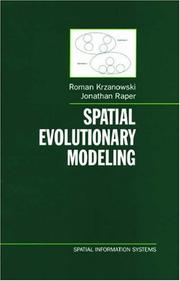| Listing 1 - 2 of 2 |
Sort by
|
Book
ISBN: 9781608076864 1608076865 9781608076857 1608076857 Year: 2013 Publisher: Boston
Abstract | Keywords | Export | Availability | Bookmark
 Loading...
Loading...Choose an application
- Reference Manager
- EndNote
- RefWorks (Direct export to RefWorks)
"The backhaul portion of the network is comprised of intermediate links between the core network and the small sub-networks at the "edge" of the entire hierarchical network. This is a critical area because it is the side of the network that communicates with the global Internet. This practical resource serves as a comprehensive guide to designing mobile Ethernet backhauling (MEBH) services in metro areas using carrier Ethernet (CE) architecture. For the first time in any book, you find detailed advice on how to put together the many elements of the CE toolbox to create a coherent working design for a specific MEBH service. Like solving a difficult jigsaw puzzle, you learn how all the CE components and standards interact and gain knowledge of their interdependencies. You also gain insight into the tradeoffs and consequences associated with selection of specific components for a particular project."--
Ethernet (Local area network system) --- Metropolitan area networks (Computer networks) --- Long-Term Evolution (Telecommunications) --- Mobile communication systems. --- Vehicles --- Vehicular communication systems --- Radio --- Wireless communication systems --- 3GPP Long-Term Evolution (Telecommunications) --- LTE (Telecommunications) --- Cell phone systems --- MANs (Computer networks) --- Computer networks --- Electronic data processing --- Local area networks (Computer networks) --- Communication systems --- Standards --- Distributed processing

ISBN: 0197561624 1280530960 0198031017 142940390X 9781429403900 9786610530960 6610530963 0195135687 9780195135688 Year: 2001 Publisher: Oxford Oxford University Press
Abstract | Keywords | Export | Availability | Bookmark
 Loading...
Loading...Choose an application
- Reference Manager
- EndNote
- RefWorks (Direct export to RefWorks)
Evolutionary models (e.g genetic algorithms, artificial life) are emerging as an important new tool for geographic information systems for a number of reasons. First, they are highly appropriate for modelling geographic phenomena; second, geographical problems are often spatially separate (broken down into logical or regional problems), and evolutionary algorithms can exploit this structure; and finally, the ability to store, manipulate, and visualise spatial data has increased to the point that space-time attribute databases can be easily handled. This book is proposed to serve as a guide to the evolutionary modelling of spatial phenomena.
Geographic information systems. --- Genetic algorithms. --- Mathematical models. --- Models, Mathematical --- Simulation methods --- Geographical information systems --- GIS (Information systems) --- Information storage and retrieval systems --- GAs (Algorithms) --- Genetic searches (Algorithms) --- Algorithms --- Combinatorial optimization --- Evolutionary computation --- Genetic programming (Computer science) --- Learning classifier systems --- Geography
| Listing 1 - 2 of 2 |
Sort by
|

 Search
Search Feedback
Feedback About UniCat
About UniCat  Help
Help News
News